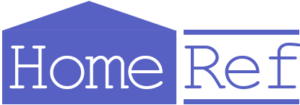As remote work becomes increasingly popular, creating a productive and efficient home office has never been more important. Equipping your workspace with the right technology and tools can significantly impact your focus, organization, and overall work performance. In this article, we’ll explore essential tech tools and tips for designing a home office that fosters productivity and efficiency.
- Ergonomic and Functional Workspace
Invest in ergonomic furniture and accessories to ensure comfort and reduce the risk of strain or injury during long work hours. Key elements include:
- A comfortable, adjustable office chair with lumbar support
- A height-adjustable desk or a sit-stand workstation
- Ergonomic keyboard and mouse
- Monitor risers or adjustable monitor arms for optimal screen height and viewing angles
- High-Speed Internet and Reliable Wi-Fi
A fast and reliable internet connection is crucial for smooth video conferencing, file transfers, and seamless communication with colleagues. Upgrade to a high-speed internet plan and consider investing in a mesh Wi-Fi system or a Wi-Fi extender to ensure strong, consistent coverage throughout your home.
- Efficient Computer Setup
Choose a computer setup that suits your work style and requirements, whether it’s a laptop, desktop, or a combination of both. Ensure your computer has sufficient processing power, memory, and storage capacity to handle your workload and consider adding an external monitor for increased screen real estate and multitasking capabilities.
- Streamlined File Storage and Backup Solutions
Organize and protect your digital files with streamlined storage and backup solutions. Options include:
- Cloud storage services (e.g., Google Drive, Dropbox, or OneDrive) for easy access and collaboration
- External hard drives or Network Attached Storage (NAS) devices for secure, local backups
- Regularly scheduled data backups to prevent data loss
- Effective Communication and Collaboration Tools
Stay connected and collaborate efficiently with your team by leveraging communication and project management tools such as:
- Video conferencing platforms (e.g., Zoom, Microsoft Teams, or Google Meet)
- Instant messaging apps (e.g., Slack, Microsoft Teams, or Google Chat)
- Project management software (e.g., Asana, Trello, or Basecamp)
- Noise-Canceling Headphones
Invest in a pair of high-quality noise-canceling headphones to minimize distractions and improve focus during work hours. Choose a model with a built-in microphone for clear, hands-free communication during video calls and conferences.
- Smart Home Integration
Integrating your home office with smart home technology can enhance productivity by simplifying control over your workspace environment. Incorporate smart lighting, temperature control, and voice assistants to easily adjust settings and automate tasks without interrupting your workflow.
- Cable Management Solutions
Keep your workspace organized and clutter-free with effective cable management solutions. Use cable organizers, clips, or sleeves to keep cords tidy and prevent tangles or tripping hazards.
Conclusion
A productive and efficient home office requires a thoughtful combination of ergonomic design, cutting-edge technology, and organization. By incorporating these essential tech tools and tips into your workspace, you can create a comfortable and focused environment that supports your remote work needs and boosts your overall performance.

